Tooth Whitening Miami
Tooth whitening in Miami, Florida is one of the most requested cosmetic dentistry treatments. This is because tooth whitening is a non-aggressive way of restoring the natural shine to teeth, as well as removing stains that dull the enamel. In addition, this type of treatment is one of the safest for dental health, and allows you to preserve a natural and fresh smile.
Book A Free Consultation
Financing is Available with 0% interest.
NEW PATIENTS ONLY
LIMITED-TIME SPECIAL OFFER
WHAT IS
What is tooth whitening?
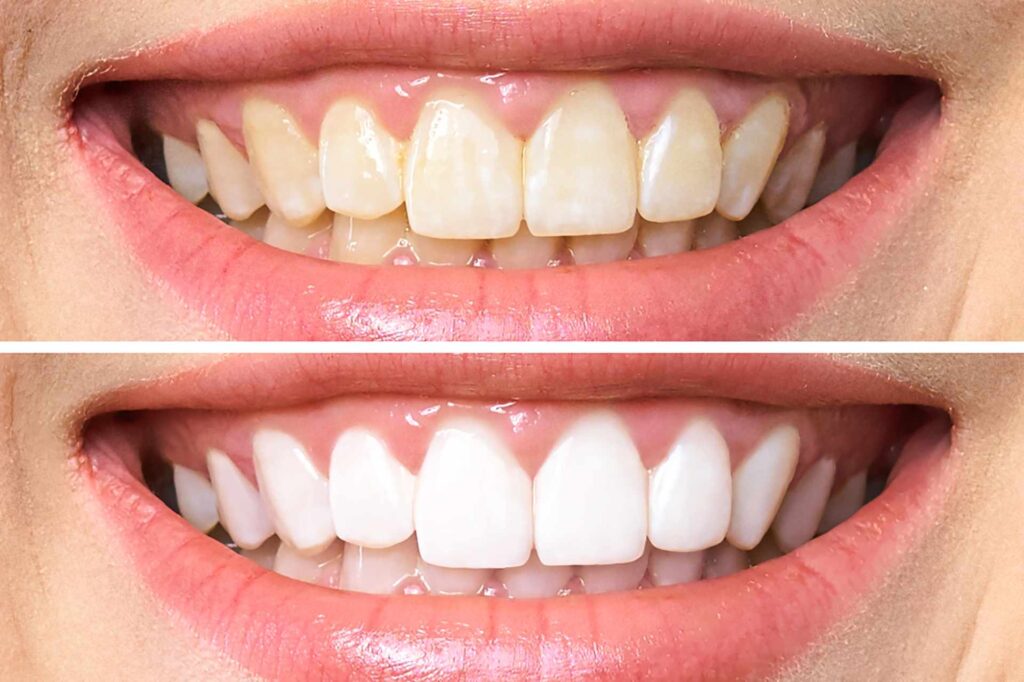
Many times some of the dental problems that we mentioned a moment ago can be solved by doing a deep cleaning of the teeth. But sometimes cleaning is not enough, because the stains are very embedded. This is when tooth whitening becomes a valid treatment to provide a safe and lasting solution. So what is tooth whitening?
Tooth whitening can be defined as a dental aesthetic treatment that consists of lightening the tone of the teeth, using some known methods (we will analyze these methods later). Tooth whitening does not change the natural color of the teeth to a white shade, but it can lighten them to their natural shade.
This means that tooth whitening will not make teeth white, as most users think. Teeth are never actually 100% white, and teeth that are too white will not look natural. What tooth whitening achieves is that the natural tone of the teeth is lighter. To achieve optimal results, this type of treatment must be carried out by a professional dentist or by qualified personnel.
When should tooth whitening be done?
Although tooth whitening has become a fashion in which many want to participate, it should not be a treatment that is carried out capriciously. Tooth whitening can be done when:
- It is necessary to remove stains from food or medications that persist on the teeth.
- There are teeth discolored naturally or due to some chemical effect.
- It is desired to lighten the tone of pigmentation of the teeth in general.
- You want to improve the aesthetics of your natural smile so that it looks brighter and healthier.
Likewise, it is important that a doctor specializing in dentistry carry out a research consultation before undergoing treatment. Not all teeth are suitable for this practice, and only someone with knowledge in the field can guide us correctly. In fact, before performing tooth whitening, doctors must carry out a comprehensive clinical examination of oral health, to rule out the existence of possible pathologies that may be affected by whitening. If finally the patient does not present pathologies and has healthy teeth, treatment can proceed.
When is it not suitable for tooth whitening?
If patients are not in good oral health, tooth whitening cannot be performed. First, the health problem would have to be solved, and then move on to whitening. This treatment cannot be performed when there is gum disease, when there are cavities, when there is dental infection, etc. In case the patient wants to whiten, the first thing will be to treat dental health problems.
This treatment is also not recommended for patients who have any frontal restoration of the teeth, such as bridges, veneers, crowns or dental adhesives. The latter is due to the fact that the materials with which the restorations are made (resins, porcelain or metals such as zirconium and platinum) do not react with whitening products. In these cases, if whitening were to be carried out, the restorations would be darker in color than the rest of the natural teeth. So, unless the restorations are lighter than the teeth, it is not recommended.
ABOUT OUR DOCTOR

Dr. Helen Carmenate
Dr. Carmenate attended Ibero-American University in the Dominican Republic, graduating with an Undergraduate Degree in Dentistry before moving to Miami to complete her General Practice Residency at Florida Institute for Advanced Dental Education (FLIADE).
She specializes in smile design, restorative and cosmetic dentistry.
PROCEDURE
How does tooth whitening happen?

Three types of tooth whitening in Miami Perfect Smile
There are 3 fundamental techniques to perform tooth whitening in Miami. All of them can usually be found in all dental clinics. These 3 methods are grouped into two general variants: one is external tooth whitening and the other is internal tooth whitening.
As we saw before, there are stains that appear on the outer layer of the teeth, while there are others that appear within the dental pulp. The tray and Zoom tooth whitening methods are external, because they are performed on the outside of the teeth. Instead, the internal tooth whitening method is conducted, as the name suggests, inside the teeth.
These 3 methods of tooth whitening are directed towards the same goal: whitening the teeth, and their practice has a similar base. The key that differentiates them is in the concentration and the way in which the whitening material is applied to the teeth. Let’s look at what the tooth whitening methods that we can find in Miami clinics consist of:
1- Tooth whitening with tray or splint
This is a widely used and preferred method by patients, since it is mostly done at home with the supervision of the dentist. The first thing is for the doctor to make a recognition of the patient’s oral conditions. If the state of oral health allows it, the dentist will take the impressions of the teeth, which will be the mold to build the whitening tray or splint. The trays are made in the laboratory, and are a true copy of the teeth, so they are personalized.
The function of the splint or tray is to keep the whitening solution in direct contact with the teeth, and at the same time isolate it so that it does not come into contact with the gums or the mouth. The personalized splints have a great difference in quality with those that come in the whitening kits that are sold in the market. The latter are not personalized but generic, so they can leak the whitening solution into the mouth. If the bleach solution gets on the skin inside or outside the mouth, it can burn the skin and even cause sores.
One of the advantages of the tray method is that the patients themselves, two hours before going to bed, will apply the whitening solution, which will be supplied to them in the office. This allows it to be a flexible and comfortable method, but with the guarantee of being assisted by a professional. Another point in favor of performing this procedure in a clinic is that the whitening solutions are more concentrated and more effective than those sold in market kits.
The tray or splint can be stored, with the aim of reusing it at any time the patient needs to have teeth whitening again. Another advantage of this method is that the patient can decide how far he wants to take the treatment, as long as it does not exceed the two weeks that, at most, it is recommended to keep the teeth in contact with the whitening solution.
How tooth whitening is done with a tray or splint
Undoubtedly, this is a practical method, which allows teeth to be whitened little by little to the desired level. It is always recommended to carry out a dental cleaning with the dentist before starting the whitening. Thanks to cleaning, we will remove all the tartar that may be attached to the surface of the teeth, which helps the whitening formula to take effect on the entire surface.
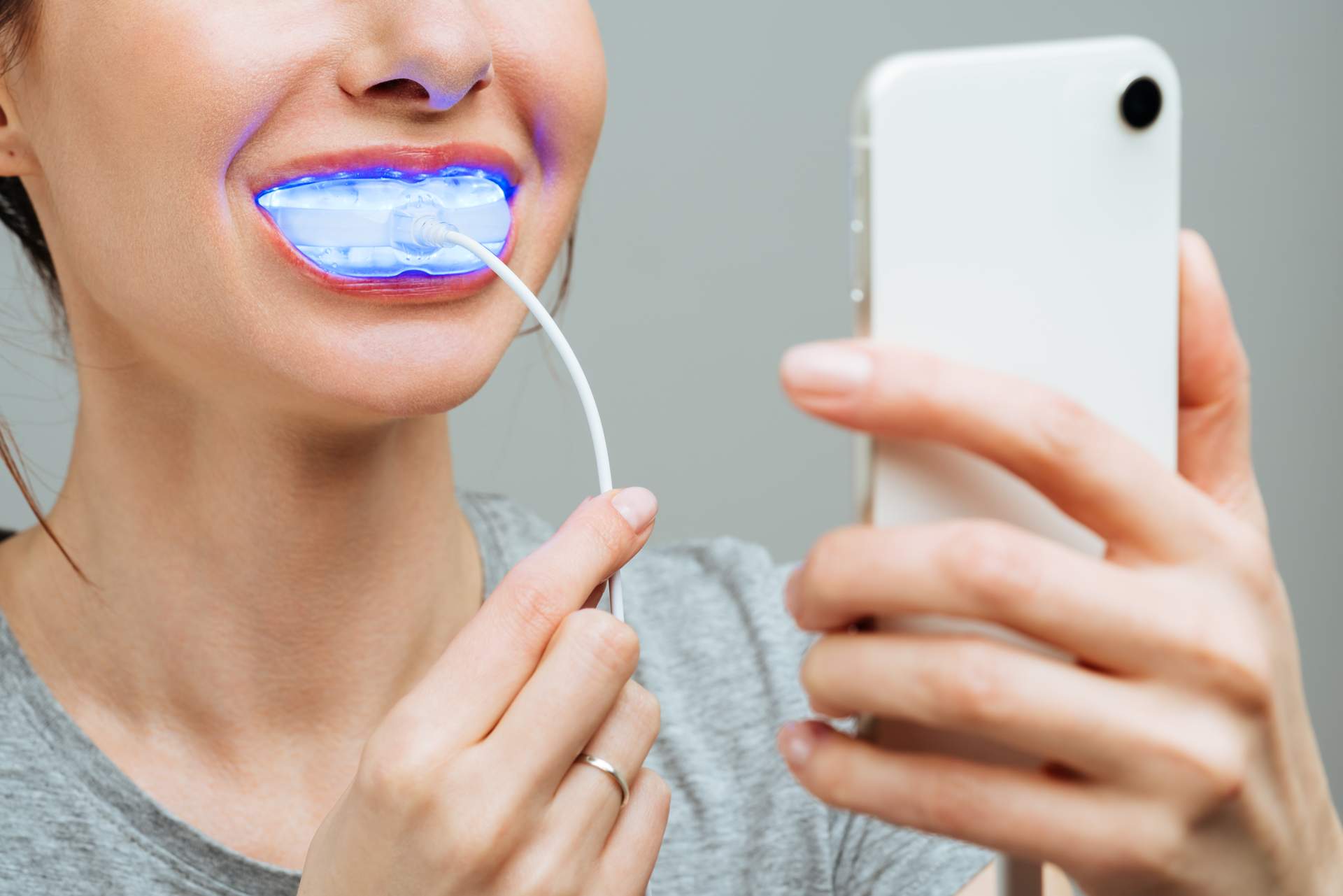
One of the most used brands of gel in Miami for tray teeth whitening at home is Opalescence , which can only be purchased at dental clinics and comes in various formats and concentrations, to adapt to the needs of each patient.
Let’s see in 5 brief steps how this method is applied:
- The dentist in the clinic examines the health of the teeth and gums, to see if they are suitable for teeth whitening.
- He then takes impressions of the patient’s teeth.
- The tray is ordered to be manufactured in the laboratory, which will have the exact shape of the patient’s teeth and gums. Each tray is completely personalized.
- The tray is tested on the patient and instructions are given to carry out the whitening treatment at home. The patient takes the tray and the bleaching solution.
- Every night for a week, 2 hours before going to bed, the patient should apply the whitening solution. It is important to keep it in the tray, and prevent it from coming into contact with the gums and tongue.
2- Zoom Tooth Whitening
Zoom is another of the whitening methods most sought after by clients in Miami dental clinics. Zoom light is the one emitted by the lamp used for the treatment. Unlike tray whitening, this method is carried out entirely in the dental office. Zoom teeth whitening is powerful and can be done in about an hour. The procedure consists of 3 steps, which are repeated in 3 consecutive sequences. After this the patient will have teeth up to 8 times lighter than before the treatment.
The Zoom light lamp (or Zoom laser) emits a blue LED light, capable of enhancing and catalyzing the whitening capacity of the gel that is previously applied to the teeth. The gel-filled teeth are exposed to the lamp, and this contact of the light with the whitening solution has the desired effect on the enamel and dentin.
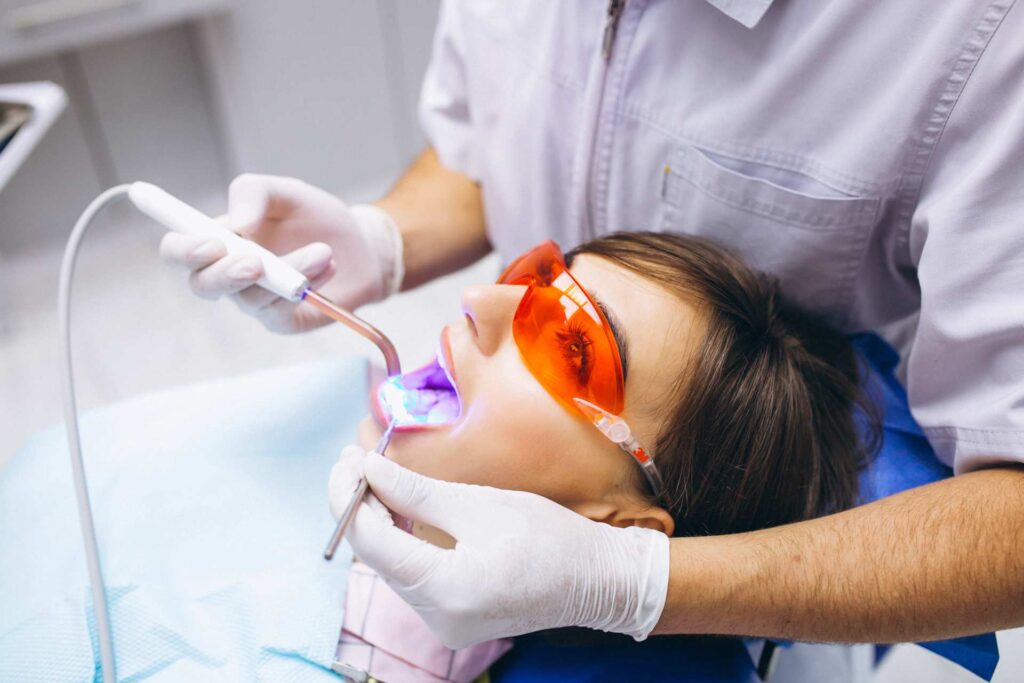
The bleaching solution used in this process has hydrogen peroxide or hydrogen peroxide as its active ingredient, normally at 25%, which is a safe concentration for oral health. Hydrogen peroxide, used in the right dose, is capable of dissolving a large number of organic and inorganic compounds on contact. Thanks to this, it produces discoloration and results in tooth whitening.
How Zoom Tooth Whitening Is Done
Zoom treatment has a quick effect on the teeth. It can lighten enamel and dentin discoloration in less than an hour. This makes it the preferred method for those who want to see immediate results. Precisely due to the intensity of the treatment, it is strictly recommended that it be carried out by a professional.
Let’s see in 7 steps how Zoom tooth whitening is done:
- The dentist in the clinic examines the health of the teeth and gums. Only a professional dentist can decide if the patient is suitable for tooth whitening.
- In most cases, before whitening, a dental cleaning is done to remove tartar or plaque accumulated on the teeth. In this way, the Zoom effect will reach all areas equally, and will achieve a homogeneous effect.
- The gums, lips and surroundings of the mouth are well covered with protectors that will prevent the contact of light and the bleaching solution with the skin. Also, this can be supplemented with a special cream on the lips and a protective solution on the gums.
- The whitening gel is placed on all the teeth, until they are completely covered.
- The Zoom lamp is placed, which emits the light that will activate the whitening effect of the gel. The special whitening light will cause the gel to penetrate the surface of the teeth and remove existing stains and discolorations.
- The process of applying the whitening gel and putting on the lamp lasts 15 minutes, and is repeated 3 times in a row, so the treatment lasts 45 minutes in total.
- Finally another gel is applied. Its objective is to reduce the sensitivity that can be felt in the teeth as a result of the action of the whitening gel and the Zoom lamp on the enamel and dentin.
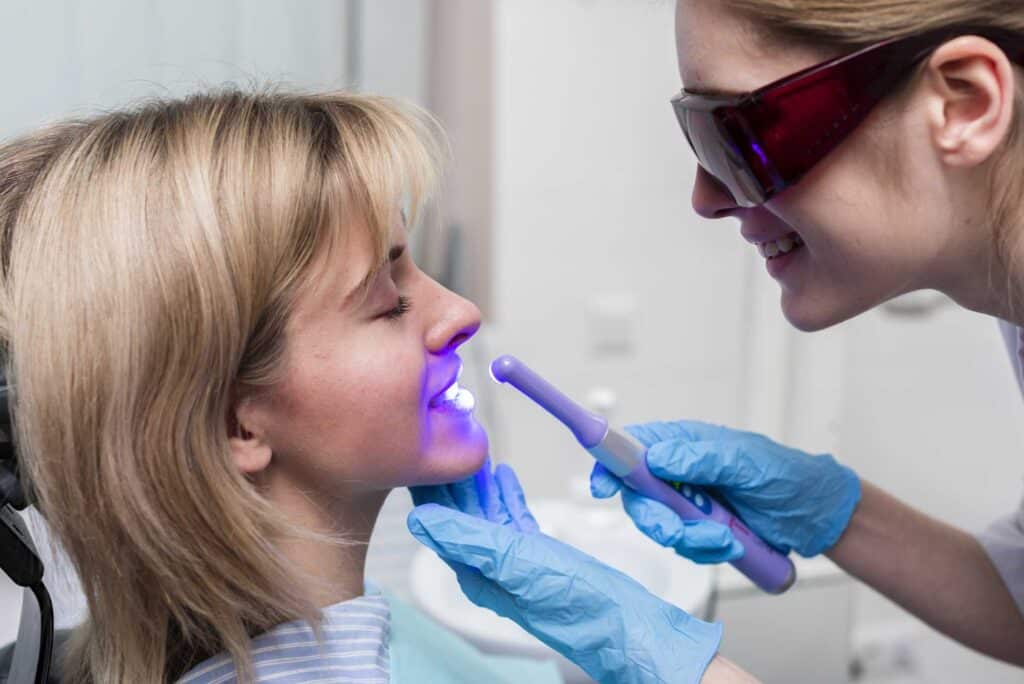
3- Internal tooth whitening
Unlike tray or Zoom teeth whitening, which are done on the outside of your teeth, internal whitening is done on the inside of each tooth. We have already said that all dental whitening must be performed or supervised by specialists. But this is especially true for internal tooth whitening, because it is much more complex to perform than the previous two.
Internal bleaching is used to lighten teeth that are not alive due to trauma, or that have had a root canal, or because they are stained inside due to the consumption of medications. Teeth with these characteristics do not react to external whitening.
How internal tooth whitening is done
Internal tooth whitening is performed inside the tooth, more specifically in the pulp chamber. It is performed on a single tooth, individually, and not on all the teeth at the same time, as was the case with external methods. Let’s see in 9 steps how internal tooth whitening is carried out:
- The first thing is to do some tests on the tooth to be treated. Intraoral and oral photographs are taken, as well as panoramic and periapical radiographs. The photographs allow a comparison to be made between the previous state of the tooth and the final result. They also allow you to see in detail the state of health of the tooth.
- Then a shade is taken to determine the original shade of the tooth, by comparing it with other healthy teeth. For this a color scale is used. The objective is that whitening helps the tooth to be the same color as the others.
- Once the above is done, the pulp cavity is opened. If there was endodontics or root canal treatment, the materials or resins are removed and the interior of the tooth is left open again. That’s where you go to work.
- Now we proceed to the cleaning of the pulp cavity. The pulp chamber is thoroughly washed until the inside of the tooth is clean. It is important to remove any debris in the pulp cavity, because the success of the treatment depends on this.
- When the inside of the tooth is clean, the whitening gel is applied inside the pulp chamber.
- Then a temporary sealing of the tooth with cement is made, with the aim of letting the whitening gel act for the next 7 days.
- After 7 days, the patient returns to the consultation for review. At this time, the sealing cement is removed and the result is assessed. If the tooth already has the desired color, it goes on to reconstruction. If the tooth is still stained or has not reached the right color, a new visit is scheduled to perform another whitening cycle.
- Finally, when the tooth has the desired color, it is sealed and reconstructed definitively.
- Finally, photos of the whitened and reconstructed tooth are taken again, to compare the previous state with the current one.
DENTAL STAINS
Types of dental stains
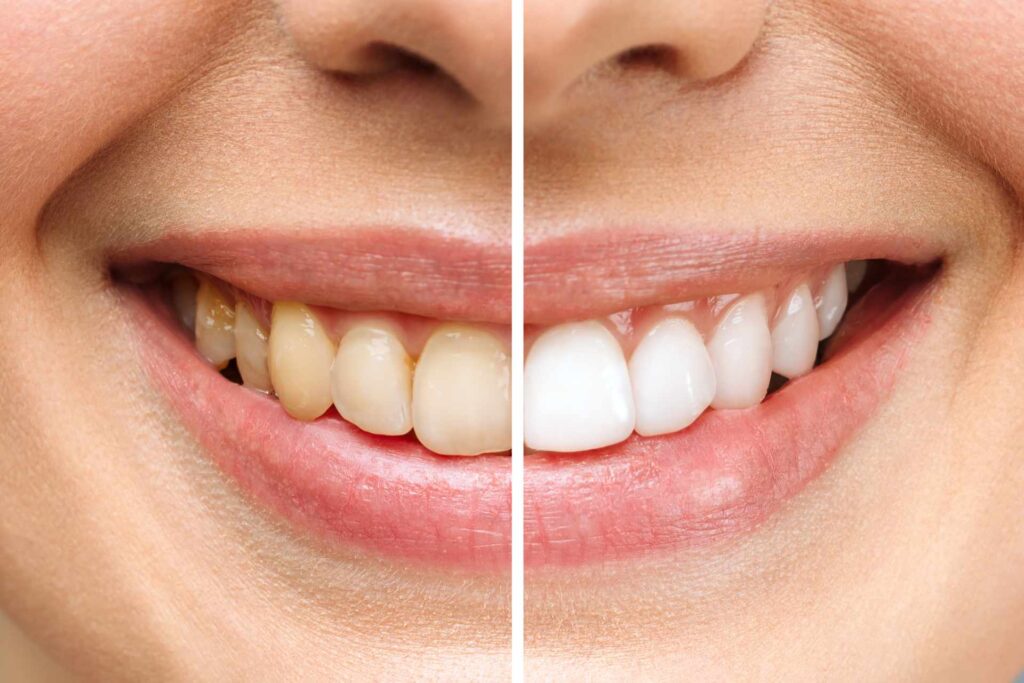
Dental stains have different origins. Sometimes they arise from the intake of certain foods, sometimes from exposure to substances such as nicotine, sometimes they appear due to a disease or the consumption of certain medications. There are foods that have pigments in their chemical composition that can affect the surface of the teeth, and begin to accumulate until they form a stain.
From the point of view of their location on the tooth, stains can be external or internal. External dental stains are those that are above the enamel, so they are the easiest to remove with teeth whitening methods. Other times the stains are inside the teeth, that is, they are located within the enamel and dentin. These cases require a complex treatment to remove the spots, because they are usually indicators of vitamin deficiency, or the result of taking medication. Let’s examine in more detail why teeth are stained:
Age
Lack of oral hygiene
Not maintaining good oral hygiene is a factor that facilitates the appearance of dental stains. Leaving your teeth unbrushed after a meal promotes the accumulation of food dyes.
Foods and drinks with strong coloration
Smoking
Trauma
Medication Consumption
COST
Comparative table of the average cost of tooth whitening in Miami
Next, we will see a comparative table between the different costs of the types of tooth whitening in Miami clinics. We will also put a summary of the characteristics of each method (what the treatment consists of, how long it takes, etc.) Prices usually vary from one treatment to another and also from one clinic to another. That is why we will give ranges or averages of the costs for the types of tooth whitening in Miami.
TYPES OF DENTAL WHITENING IN MIAMI | DURATION TIME | WHAT DOES IT CONSIST OF | IN WHICH CASES IS IT USED | AVERAGE COST FOR TOOTH WHITENING IN MIAMI |
Tooth whitening by tray or splint | It has a maximum of daily application of the gel of 2 weeks in a row. If it is necessary to continue, you should rest for as long as the dentist decides, so as not to damage the tooth enamel. | A custom tray or splint is created in the laboratory in the exact shape of your teeth. The patient will use this tray to apply the whitening gel to the teeth every night, for up to 2 weeks at a time. | It is a type of teeth whitening to remove stains lodged in the outer layers of the teeth. Ideal for patients who want to carry out the treatment in the comfort of home, although always with the supervision of the dentist. | The average cost for teeth whitening per tray in Miami is between $300 and $600. This price includes the creation of the splint or tray and the whitening kit. If more than one whitening kit is required, the price will be higher. |
Zoom Teeth Whitening | It has a duration of approximately 45 minutes. | This method is performed entirely in the dental clinic. It requires covering the gums and lips with protectors, to avoid contact of the skin and mucous membranes with the whitening gel, which is more powerful than the one used in the trays. It also requires the Zoom lamp, which allows the whitening gel to act faster and more effectively. | This is a type of external tooth whitening. It works for patients who have discolorations and stains in the most superficial layers of the teeth. It is done in a single appointment at the dentistry clinic. | The average cost for Zoom tooth whitening in Miami is between $300 and $800 per session. The total will depend on the number of sessions needed to reach the desired tooth color. |
Internal tooth whitening | It can last 7 days. In the event that the tooth has not whitened properly, the treatment is repeated for another 7 days, having allowed a reasonable intermediate time to pass, determined by the dentist. | This tooth whitening method is internal and is performed within the pulp of the tooth. The whitening gel is inserted inside the tooth and sealed to let it act for 7 consecutive days. The dentist then removes, washes, and rebuilds the tooth. | Internal whitening treatment is performed on teeth that are stained on the inside. It is applied in cases of teeth that for some reason are not vital or in teeth stained by the consumption of medications. | The average cost of in-house teeth whitening in Miami ranges from $300 to $500 for each in-office session. This price is for each piece to be treated. |
PROS AND CONS
Pros and cons of tooth whitening
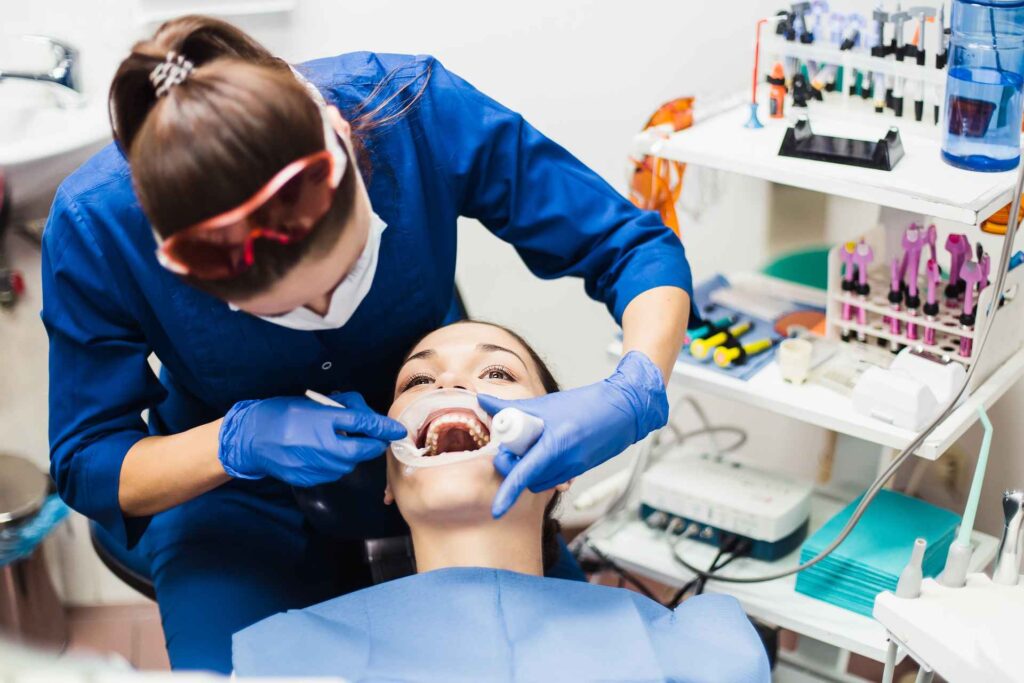
Like any medical treatment, tooth whitening has pros and cons. Although in this case the balance leans more towards the pros than the cons. However, it is important to know both the benefits of tooth whitening and the risks it can bring. Only knowing the advantages and disadvantages that this treatment implies, will we be at a good point to decide if it suits us or not. In any case, we always recommend consulting a dentist when determining if we are suitable for tooth whitening.
BENEFITS
Benefits of tooth whitening
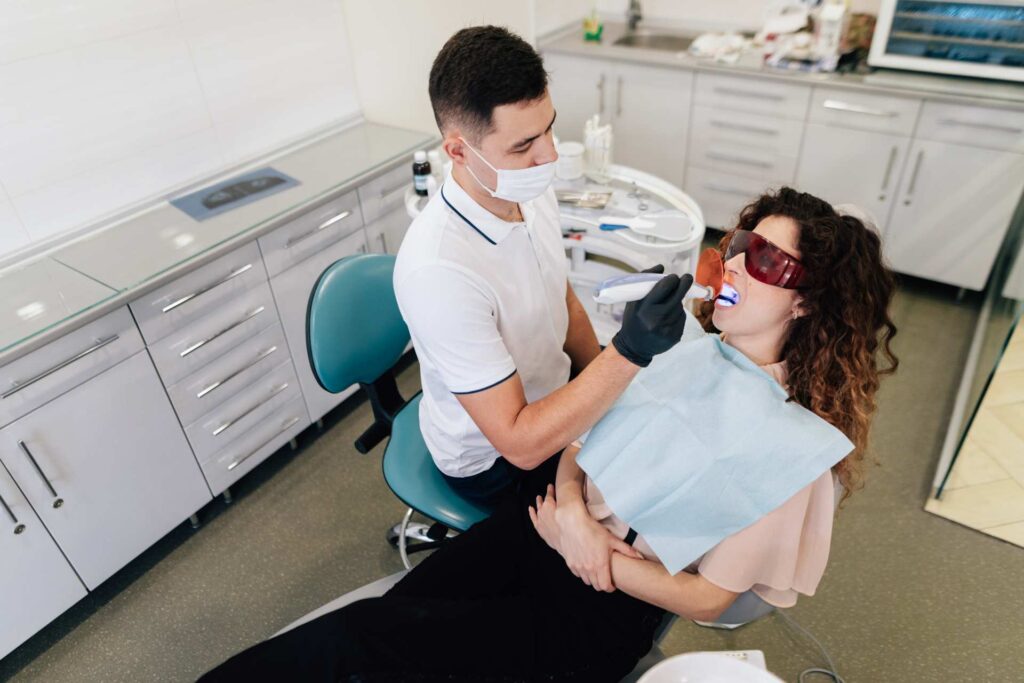
The benefits of tooth whitening are many, and almost all of them are aimed at aesthetics and personal appearance. They range from the physical to the psychological field. Being able to remove surface stains from teeth is essential to improve oral health. In addition, showing off renewed and healthy teeth helps psychological well-being during interaction with other people. Let’s see the benefits of tooth whitening:
Numerous scientific studies have shown that carbamide peroxide can work as an oral antiseptic , helping to reduce dental plaque. It also has a positive effect on wound healing. So far no side effects of these benefits of whitening agents have been found.
RISKS
Risks or cons of tooth whitening

Now we will look at the possible risks and disadvantages that tooth whitening can have. It must be taken into account that the risks decrease considerably if we carry out this practice in a dentistry office. As for the disadvantages, it seems to us that they are not so significant as to outweigh the cons when deciding whether or not to receive tooth whitening.
Many patients, after undergoing tooth whitening, experience tooth sensitivity. In the vast majority of cases, this sensitivity is normal, does not affect daily life and should disappear within a week of whitening. However, there is some risk, especially when this practice is not performed by professionals. If the dose and proportion of the whitening agent is very high, the enamel can be removed, and this causes high dental sensitivity that can be dangerous.
One of the most notable risks of teeth whitening is overdoing it, whether it’s too much whitening gel or too much frequency of use. The obsession with the whiteness of the teeth can lead to the abuse of the treatment. Some Miami dentists identify excessive tooth whitening with the word bleachorexia.
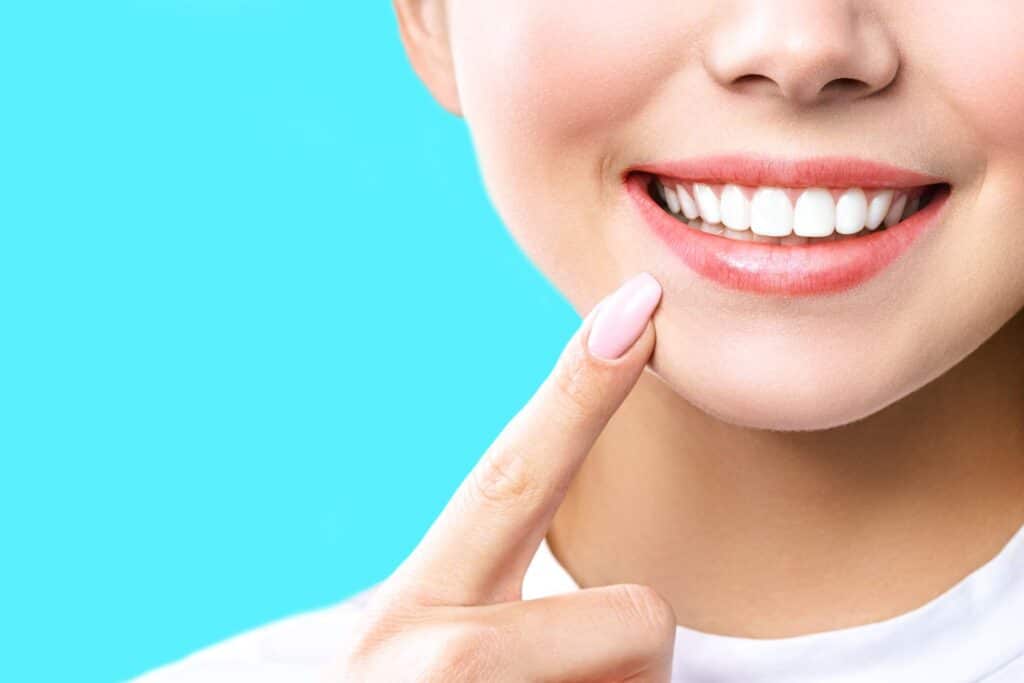
TEETH BONDING MIAMI
Frequently asked questions

Will my dental insurance cover tooth whitening in the USA?
Is tooth whitening bad for tooth enamel?
How long does tooth whitening last?
The duration of the effect of tooth whitening can range from 6 months to 2 years. There are even those who have reported a durability of more than 5 years. That the effects of the treatment last longer, will depend on the care that the patient has for the teeth after whitening. Here are some tips to help your teeth stay whiter for longer:
- Avoid or reduce the consumption of highly pigmented beverages such as coffee, red wine and tea.
- Avoid or reduce consumption of beverages that wear down enamel, such as citrus juices and other acids
- Avoid or reduce the consumption of highly pigmented foods, such as chocolates, brightly colored fruits, etc.
Maintain good oral hygiene and use the maintenance kits that are sold in the offices, as well as whitening -type toothpastes . It is advisable to ask the dentist which of these solutions is best for each case.

Does tooth whitening affect veneers or crowns?
Tooth whitening does not affect the condition of the veneers or crowns. In fact, the porcelain, resin or metal materials with which veneers and crowns are made are inert to the effect of the whitening agent. This means that they do not change their appearance after whitening. However, the whitening agent can temporarily reduce the bond strength of the tooth enamel with the material that holds the restoration together.
Another precaution that must be taken is when whitening dentures that have a combination of natural teeth and dental veneers is going to be done. As veneers are not sensitive to whitening gel, they will remain the same color when your natural teeth are whitened. As we have seen, this is known as “technicolor teeth”, and is considered unsightly. One possible solution is to replace the veneers with others that have the current shade of the whitened teeth, although tooth whitening can also be avoided.
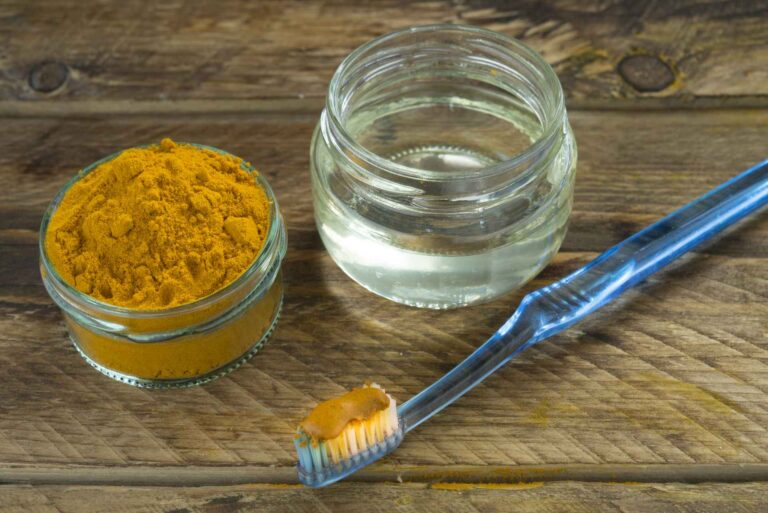
Tooth Whitening Homemade: Recommendations
Have you ever had a doubt: tooth whitening at home or in the clinic? You should be aware that tooth whitening at home is gaining
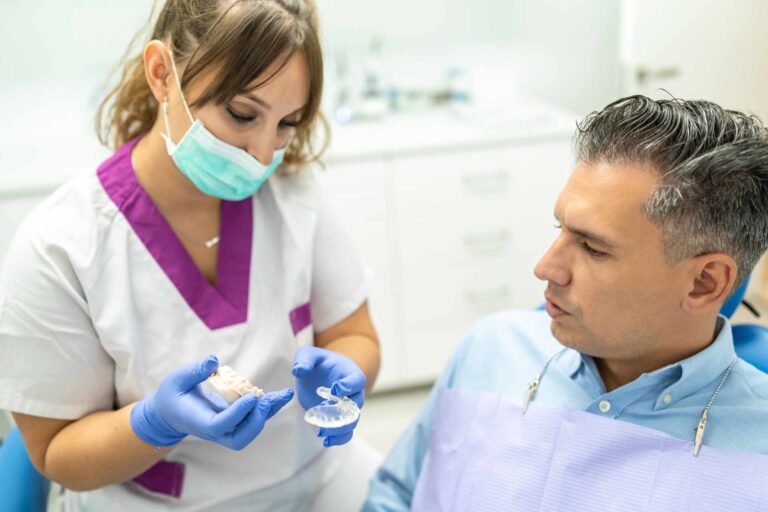
Tooth whitening tray: Everything you need to know
The dental whitening splint is one of the most frequent methods in aesthetic dentistry. It is the ideal option for many, perhaps because of the

